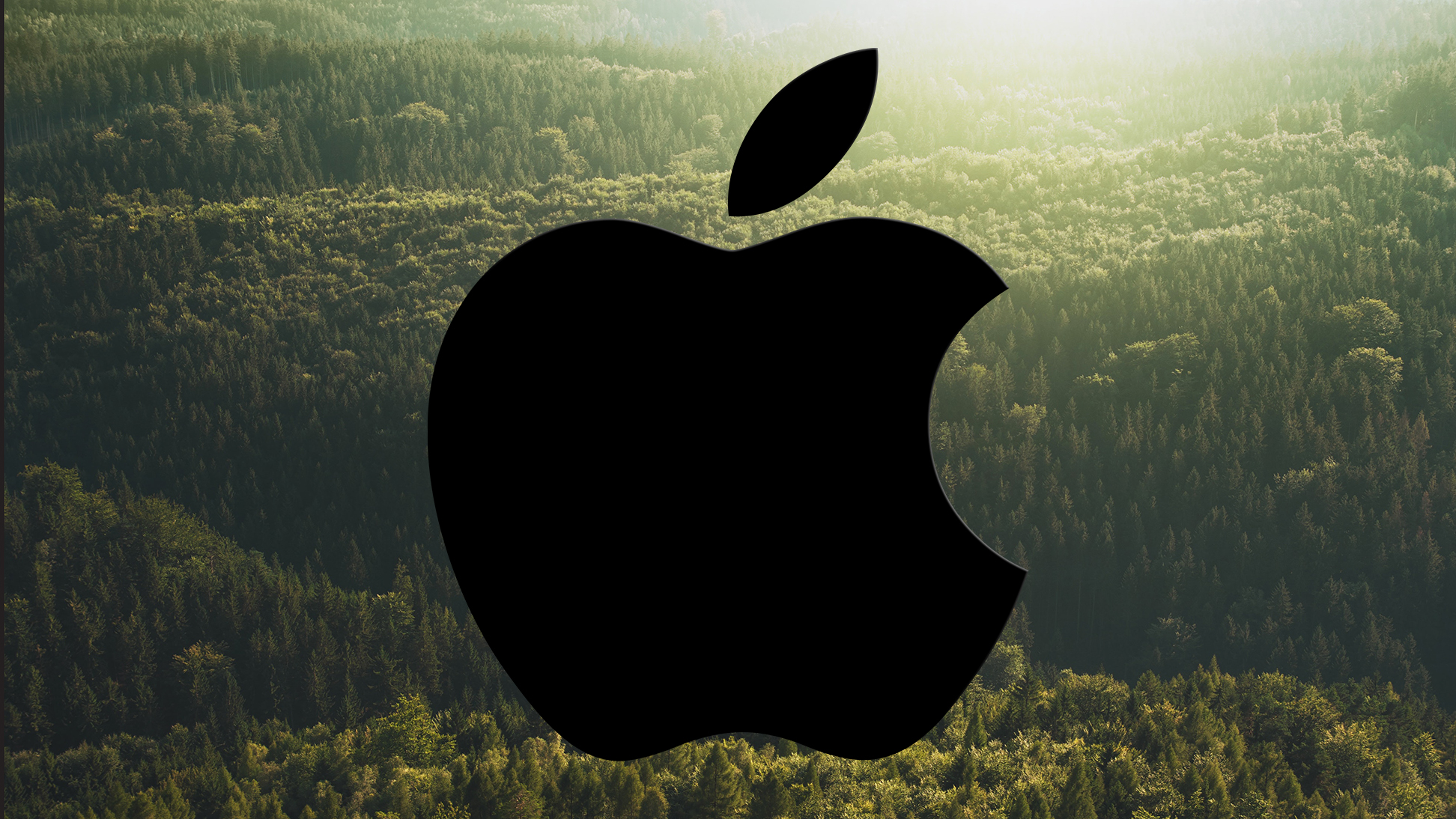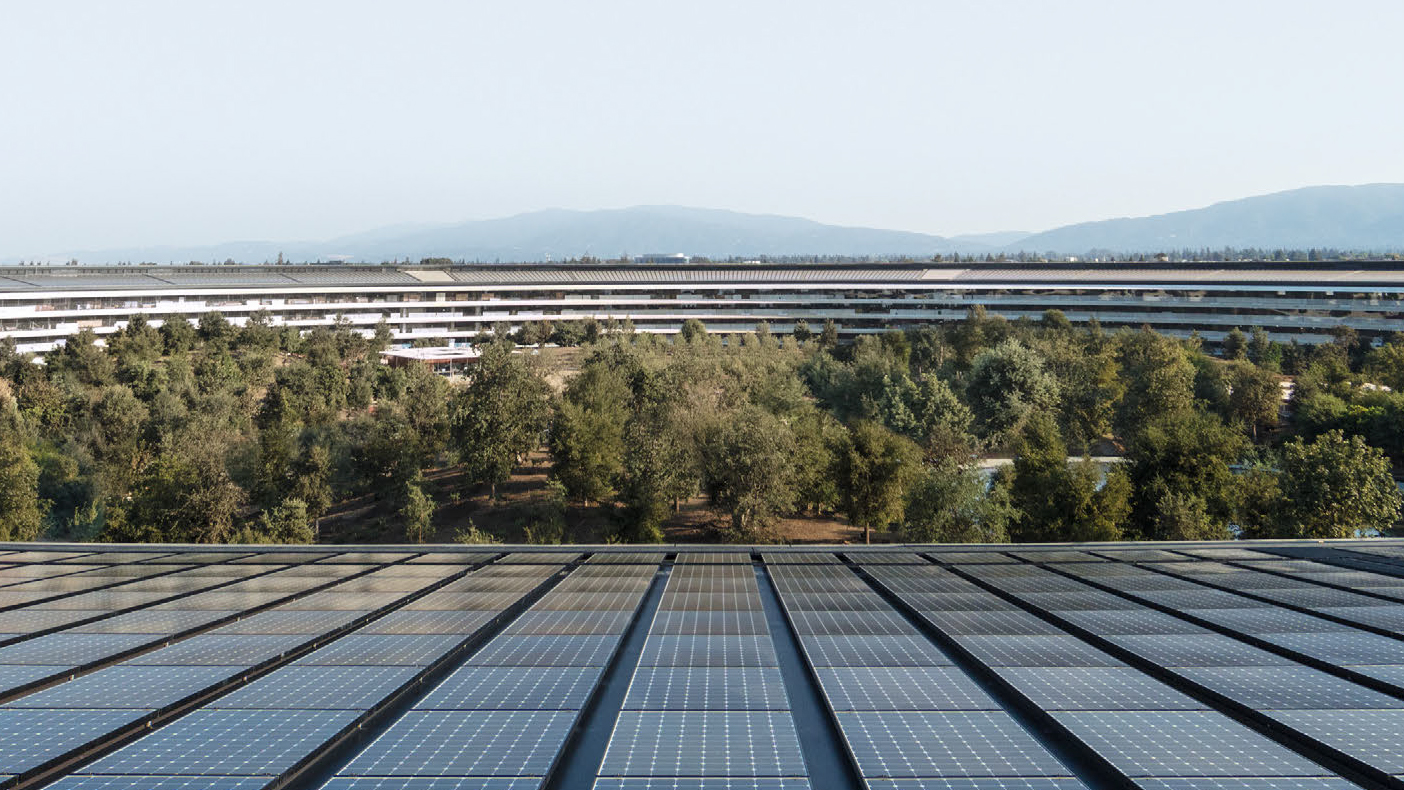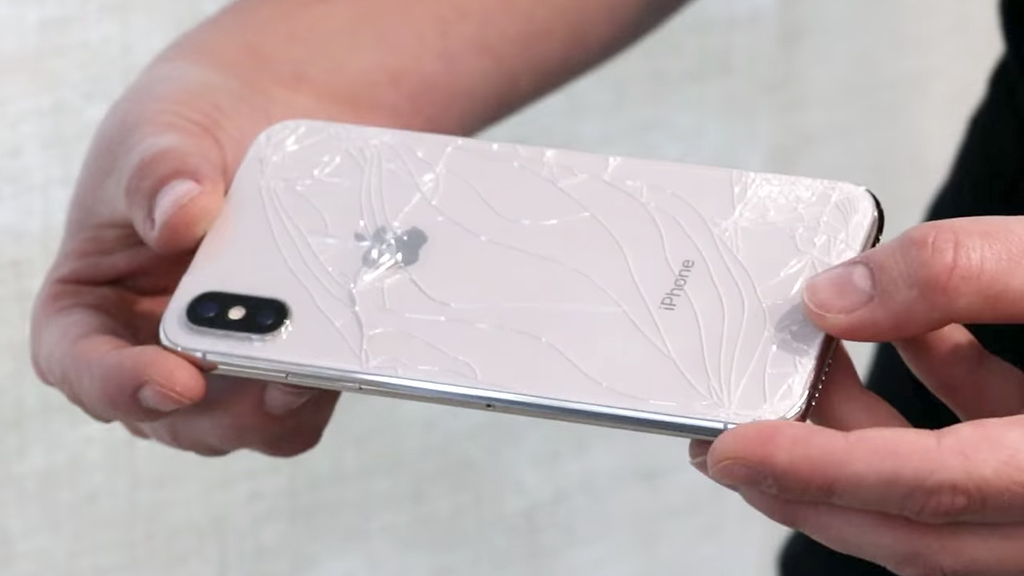Apple’s environmental initiatives: just how green is the big fruit of tech?
We take a bite into Apple’s sustainability efforts

According to Apple’s most recent Environmental Responsibility Report, its "never wavering mission" is "to change the world". However, with the sheer quantity of harmful and volatile materials that go hand-in-hand with tech manufacturing of this scale, "changing the world" may not be the best phrase to use.
"We continuously strive to reduce our impact on the Earth we all share", the report continues, "today, we remain focused on three priorities where we believe we can make a big difference".
These three areas include reducing impact on climate change, conserving precious resources, and utilizing safer materials in Apple products and processes, but how well does Apple answer its own calls?
Climate change
With the release of the 2018 Environmental Responsibility Report came the news that Apple had reached its target of 100% renewable energy used across all of the company’s operations, spanning 43 countries around the globe.
The target was set over a decade ago and the company has since constructed multiple wind and solar farms in order to sustain their existing data centers, retail stores, corporate offices, and colocation facilities globally, alongside any current projects, such as Apple Park.
So if Apple is running itself on self-sustaining, renewable energy, it can’t possibly contribute to climate change in a bad way, right? Well, it’s a little more complicated than that.

Apple certainly has done some heavy lifting by getting all its in-house operations running on renewable energy, but a vast majority of its manufacturing procedures are outsourced to third-party suppliers, and these companies are numerous.
Get daily insight, inspiration and deals in your inbox
Sign up for breaking news, reviews, opinion, top tech deals, and more.
In fact, the document provided by Apple only lists its "top 200" suppliers, claiming that those not listed account for less than 2% of its "procurement expenditures for materials, manufacturing, and product assembly worldwide".
According to Bloomberg, Apple spent $140 billion on suppliers in 2017. Now, 2% of that expenditure still weighs in at almost $3 billion, which can amount to considerable environmental harm if these companies aren’t following Apple’s renewable example, so should we be worried?

Alongside its own efforts, Apple initiated a Supplier Clean Energy program, which has, as of April 2018, led to 23 manufacturers committing to a 100% renewable energy target, with most aiming for an end-of-2018 deadline.
Apple is also on target to reach its goal of introducing (alongside participating suppliers) 4 gigawatts of clean energy into the company’s supply chain by 2020, further reducing the carbon footprint of the mass-scale production of the company’s products.
Efforts such as reducing the average energy consumed by Apple products (68% in 10 years) and investing in the research of carbon-free aluminum, which itself accounts for 24% of emissions in the manufacturing process, will go a long way to reducing the company’s impact on climate change, but more needs to be done.
The 23 suppliers that are currently on board represent a promising start to the program, but Apple will need to do more than "drive broader awareness" and "empower suppliers to set goals" if it wants to incentivize the uptake of the program to the remaining 200 odd suppliers and, ultimately, reduce the 21,175 million metric tons of carbon emissions that the manufacturing process produces.
Precious resources
Products such as iPhones and MacBooks, and indeed most other tech products, contain rare natural materials such as gold, tungsten, cobalt and more. It may seem obvious, but the fact that these materials are finite does not bode well for their exponentially growing demand in the world of consumer tech.
Apple’s answer to the issue of over-mining and resource-drought is to work towards a closed-loop supply chain – a system in which the needed materials come from renewable sources or are recycled from old products, so finite resources aren’t required and it can "stop mining the Earth altogether".
This commitment was announced in 2017, so it's still in its early stages, but the company aims to achieve this by increasing the efficiency of production in order to reduce waste, replenishing the market-supply with renewable resources, and designing products that last longer.

Initial efforts have been focused on a small selection of materials that Apple deems to have the highest impact on the environment and (naturally) the user experience.
As such, projects are underway on reclaiming and optimizing the company’s use of aluminum, cobalt, copper, glass, paper, plastics, stainless steel, tin, tungsten, and rare earth elements.
Efficiency in the manufacturing process has also led Apple to make significant changes in its product designs, such as sheet-forging rather than extruding iPad Pro enclosures, which requires 73% less aluminum overall.
A machine the company has developed, dubbed Daisy, is able to take apart 200 iPhones an hour in order to more reliably recover the rare materials that comprise the more involved components like logic boards, cameras and speakers.

Another promise from Apple is the creation of products that last longer, hence reducing the need for as many phones and laptops in the world, but this is glaringly at odds with the motives of anyone trying to sell you something, let alone the inventors of the annual phone-replacement cycle.
Rigorous durability tests may well result in a product that will endure the wear-and-tear of everyday life for a year, but if Apple truly wanted to make a long-lasting device it perhaps wouldn't have designed a phone covered front-and-back in fragile glass.
While a closed-loop supply chain sounds ideal on paper, it’s certainly too early to see just how ambitious and, indeed, attainable this goal truly is until more concrete timelines and results are unveiled.
Safer materials
Just as much as rare and finite materials are used in the construction of consumer electronics, toxic and otherwise harmful chemicals find their way into the manufacturing process.
Apple has done an admirable job on this front, running and improving its own environmental testing lab over the last 12 years and finding viable alternatives and workarounds for chemicals that are considered pollutants.
So far, beryllium, mercury, lead, arsenic, PVC and phthalates have all been completely removed from the manufacturing of Apple products and components, many of which aren’t actually required by law to avoid.
Does the Apple fall far from the tree?
As one of the biggest tech producers on the planet, Apple has some immense challenges on the road to becoming environmentally sustainable, and there are certainly shortcomings in the way some of these are being addressed.
But the transparency of its procedures, their consequences, and the fixes it aims to implement give it a significant advantage in its green pursuit, even if the dollar-driven bottom line and some unknowns in the way of supplier dealings do occasionally interfere.
It's also important to note that all companies in the electronics industry are facing the same challenges, and few are as involved and vocal about their efforts to combat them as Apple.
That noise has substance though: Apple was ranked second in the list of the most sustainable companies by Greenpeace in 2017, only behind Fairphone (a company whose sole mission is sustainable phone manufacture).
Ultimately, the issues raised in this article aren’t exclusive to Apple and will impact any consumer tech company of that scale, so it’s good to see the brand, alongside the likes of Google and Samsung SDI (ranked highly in the worldwide list of sustainable brands, according to Corporate Knights), advocating transparency and a proactive approach to sustainability.
